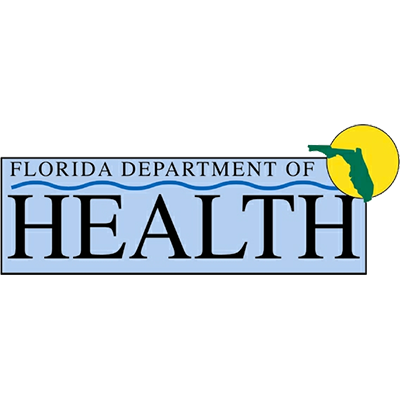Anyone who has read my articles before knows how I feel about the many barriers to care that patients with Opiate Use Disorder face. Earlier today I published a story on increasing access to methadone and suboxone for all patients, especially patients in rural areas, who many times face more hurdles than patients in cities. I cited data that we have roughly the same amount of methadone clinics nationwide in 2020 as we did in 2003 when the opioid epidemic was just beginning. Now I have come across an interesting story written by a pharmacist in South Dakota, and I was interested in her experience, as she no doubt sees some similar issues in that large rural state.
The article is by Jennifer Ball, PharmD., for “Pharmacology Focus” which is a South Dakota based publication from what I could gather. The article is titled, “Medications for Opioid Addiction Treatment – Let’s Get On It” and I agree with that sentiment, so let’s delve into what she had to say. She makes an argument that is similar to what I have said in the past. I recently cited research from New York State that was gathered over a 15-year period; it showed the efficacy and safety of methadone, and it showed decreases in overdoses, HIV, and Hepatitis C amongst program participants. There are hundreds of other studies on methadone and buprenorphine and to some extent naltrexone as well, and she concentrates on those 3 medications for opiate use disorder. She states that the benefits to mortality can be compared to that of insulin for Type 1 diabetes, meaning these medications work, which is a shocking statement when you understand how bad the opioid epidemic is right now and how hard we still make it for people to start and maintain a medication-assisted treatment regimen. The barriers to care continue even after someone enters a program, as many patients all across the country still have to wait in long lines on a daily basis to get single doses of their daily medication, and many must submit to embarrassing and invasive drug screening procedures to stay in treatment.
This point is where I think I must differ with Jennifer’s article, but it may just be a stylistic difference if she wanted to include very little of her own personal opinion. She notes the efficacy of both methadone and suboxone, and she states it better than I ever could. However, she goes on to argue that methadone “should be considered for patients that need the consistency of daily observed dosing or those who have failed multiple other options as higher doses may have better outcomes than buprenorphine or naltrexone.” I am assuming she states this because that is currently how we are forcing patients to get methadone if that is the medication that works for them, but where is the research that states that watching someone take a single dose each day is necessary? Methadone carries very little risk of overdose, and almost no risk of overdose once a patient is stable. The average patient in a methadone program is living paycheck to paycheck, and we force them to work around a daily trip to get their medication at places that we know are severely overcrowded. Where is the evidence that an incredibly useful drug “should be considered for patients that need consistency of daily observed dosing” and furthermore, where is the methadone program for the patients who will not benefit from “daily observed dosing” but whose lives could be saved by methadone? I agree with most of what Dr. Ball says in her work in this article, but we need both “proven and novel approaches” to fight this ongoing epidemic of opioid addiction, as stated by Calcaterra, S. L. et al. in the research study “Methadone Matters: What the United States Can Learn from the Global Effort to Treat Opioid Addiction”.
It should be clearly stated that Naltrexone has not shown the efficacy that Methadone and Buprenorphine have, and she states that a Cochrane Review showed no increased benefit of Naltrexone versus placebo, so when Dr. Ball compared the medication-assisted treatment to insulin, that was Methadone and Buprenorphine being compared, I assume. She does a great job of discussing the mechanisms of action of each of these drugs, and the way they are administered. As a call to action, there is not as much discussion of ways to increase access for patients as I would have liked. I do hope that Dr. Ball would agree with me when I say that with over 70,000 overdoses a year and with over 2 million people suffering from opiate use disorder, novel approaches are needed and 20% access to medication-assisted treatment, as I quoted in my last article based on the research of Calcaterra et al., is woefully short of what is necessary. Medication-assisted treatment has been too successful for too many people, especially some of the toughest OUD cases, to be out of reach to 80 percent of those people who could benefit from it.
Another important point made in the article is that methadone is recommended to be given for 12-18 months, and patients who take methadone for less than 6 months see increased rates of relapse. I think it is important to note that we are telling patients to stay on the medication for a year and a half, but these are often low-income people, some without easy access to transportation, and a year and a half means 1090 trips to and from the methadone clinic if they are forced to go every day. People looking at this issue should imagine a person struggling with opiate addiction in a rural area, who wants to get better, and then imagine adding 1090 hour-long car rides to any person’s schedule. It is very tough on many of these patients, and the ones who are able to get to a clinic are the lucky ones. I imagine there are people in South Dakota with no reasonable access to a methadone program.
As always, I am writing on behalf of the best drug rehab in Florida or Alabama, which is Florida Springs Wellness and Recovery in Panama City, Fl. If you or a loved one is in need of help for opiate use disorder or substance use disorder of any kind, there is information that may help on the programs page of this website or you can call for more information. Methadone is particularly hard for people in rural areas to access because family physicians cannot prescribe it to their patients for addiction. If you are in the rural areas of Alabama or Georgia, the best drug rehab in Florida or Alabama is Florida Springs, and we are located in the Florida Panhandle region, close to both Alabama and Georgia.
By T.A. Cannon (Contact me at TACannonWriting@gmail.com)
References
BALL, J. Pharmacology Focus: Medications for Opioid Addiction Treatment- Let’s Get On It! South Dakota medicine : the journal of the South Dakota State Medical Association, [s. l.], v. 73, n. 2, p. 88–89, 2020. Disponível em: http://search.ebscohost.com/login.aspx?direct=true&db=mnh&AN=32135058&authtype=geo&geocustid=s8475741&site=ehost-live&scope=site. Acesso em: 2 nov. 2020.
CALCATERRA, S. L. et al. Methadone Matters: What the United States Can Learn from the Global Effort to Treat Opioid Addiction. Journal of general internal medicine, [s. l.], v. 34, n. 6, p. 1039–1042, 2019. DOI 10.1007/s11606-018-4801-3. Disponível em: http://search.ebscohost.com/login.aspx?direct=true&db=mnh&AN=30729416&authtype=geo&geocustid=s8475741&site=ehost-live&scope=site. Acesso em: 2 nov. 2020.



